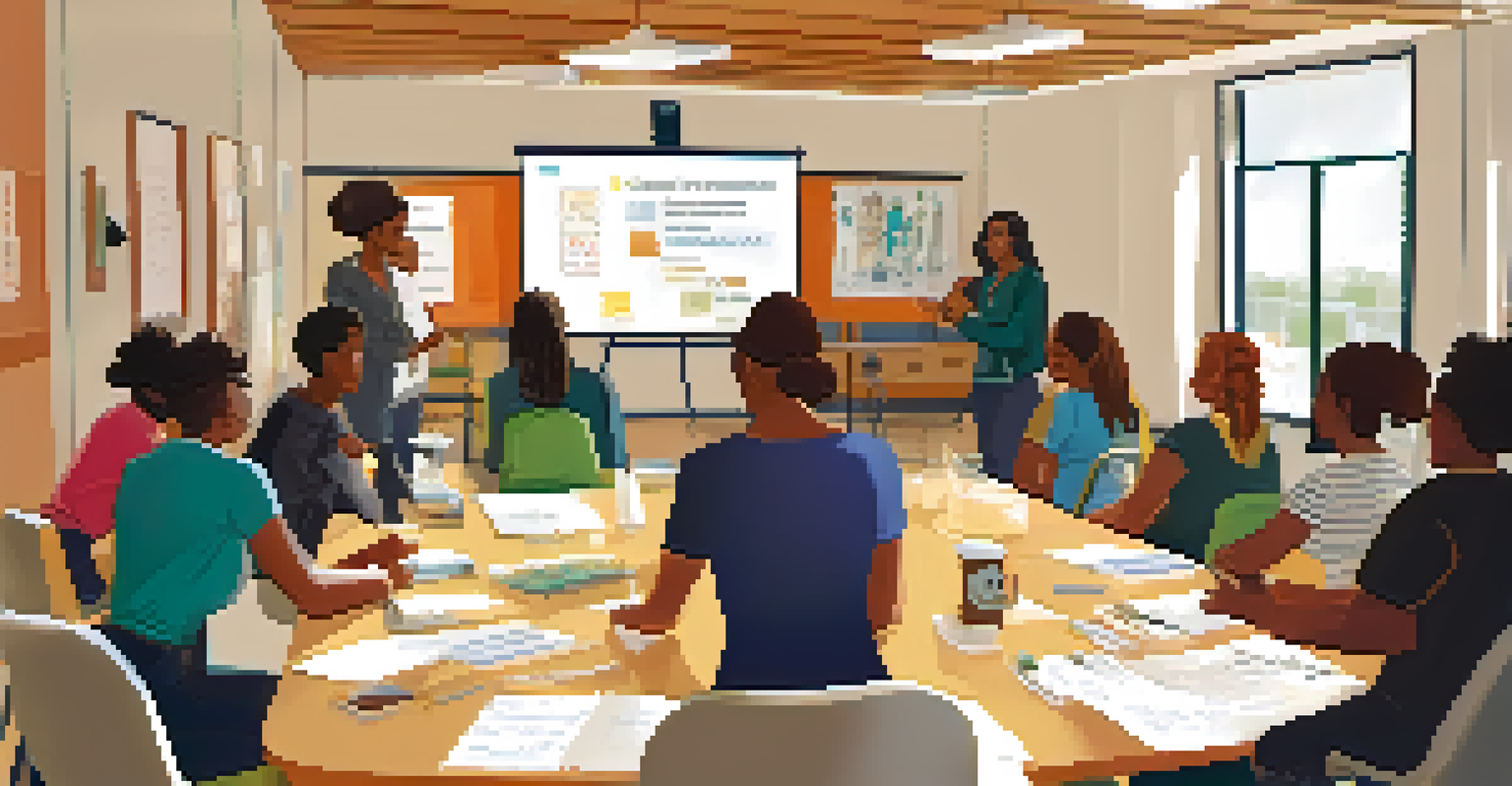Effective Communication: Bystander Intervention Tips

Understanding the Role of Bystanders in Intervention
Bystanders play a crucial role in situations where someone may be in danger or experiencing harassment. They often have the power to intervene and potentially change the outcome of an event. Understanding this role is the first step toward effective intervention.
The only thing necessary for the triumph of evil is for good men to do nothing.
By recognizing your ability to make a difference, you empower yourself to act when necessary. This sense of responsibility can create a safer environment for everyone involved. It’s essential to acknowledge that your presence and actions can influence the situation positively.
Remember that bystanders are not just passive observers; they can actively contribute to preventing harm. This mindset shift can help foster an atmosphere where intervention is encouraged and supported by the community.
Recognizing Signs of Distress or Danger
The first step in effective communication during bystander intervention is recognizing when someone needs help. Signs of distress can be verbal, like someone saying 'no' or 'stop,' or non-verbal, such as a person looking uncomfortable or attempting to distance themselves from someone.

Being aware of your surroundings and the dynamics between people can help you identify situations that may require intervention. For instance, if you notice a person being cornered or pressured, that’s a red flag. Trust your instincts; if something feels off, it probably is.
Bystanders Can Make a Difference
Recognizing the power of bystanders to intervene can lead to a safer environment for everyone involved.
Learning to recognize these signs can make you a more effective bystander. It allows you to respond quickly and appropriately, which can be critical in preventing escalation.
Assessing Your Comfort Level for Intervention
Before intervening, it’s important to assess your comfort level. While it’s commendable to want to help, knowing your limits can help you choose the best course of action. This self-awareness ensures that your intervention doesn’t put you or others in harm's way.
In a world where you can be anything, be kind.
Consider factors like the size of the crowd, the nature of the situation, and your personal safety. If you feel confident, you might choose to confront the person causing distress directly. However, if the situation feels too risky, you can opt for alternatives, such as calling for help.
Understanding your comfort levels can guide you in making effective choices that prioritize safety for everyone involved. Remember, it’s okay to seek assistance from others if you feel uncertain.
Using Clear and Direct Communication
Once you’ve decided to intervene, using clear and direct communication is key. This means addressing the situation head-on, rather than beating around the bush. For instance, instead of asking if everything is okay, you might directly say, 'That’s not appropriate; you need to stop.'
Direct language not only conveys your message clearly but also shows that you are taking the situation seriously. The person causing harm may be more likely to reconsider their actions when faced with straightforward communication.
Identify Signs of Distress
Being aware of verbal and non-verbal cues can help bystanders recognize when someone needs help.
Moreover, maintaining a calm and assertive tone can help de-escalate the situation. It’s essential to strike a balance between confidence and concern, ensuring that your message is both heard and respected.
Choosing the Right Intervention Style
There are various styles of intervention, and choosing the right one can make a difference. Some situations may call for a direct approach, while others might benefit from a more subtle method. For example, you might distract the aggressor by creating a diversion or engaging the person in distress in conversation.
Another option is to enlist the help of others. Having a team of supporters can bolster your efforts and make the intervention feel less intimidating. This collective approach can also deter potential aggressors who might think twice if they see multiple people standing up.
Ultimately, the style you choose should prioritize the safety of all individuals involved. Flexibility and adaptability are crucial in determining the most effective intervention strategy.
Following Up After the Intervention
After the intervention, it’s important to follow up with the person who needed help. A simple check-in can make a world of difference, showing that you care about their well-being. This gesture can help them feel supported and less isolated after a distressing experience.
If appropriate, encourage the person to seek additional support, whether it’s talking to friends, family, or professionals. Providing resources can empower them to take further action if they choose to do so. It’s also an opportunity for you to reinforce that they are not alone in this situation.
Follow Up After Interventions
Checking in with those who needed help reinforces support and fosters a sense of community.
Following up demonstrates that your concern extends beyond the moment of intervention. It helps build a sense of community where individuals look out for one another, fostering a culture of care and support.
Promoting a Culture of Bystander Intervention
Creating a culture of bystander intervention begins with open conversations. Encourage discussions about the importance of standing up against harmful behavior in your community, whether it’s at school, work, or home. The more people talk about it, the more likely they are to act when the time comes.
Engaging in training sessions or workshops can also equip individuals with the skills needed for effective intervention. These resources provide practical strategies and build confidence, making it easier for bystanders to step in when necessary.

Ultimately, promoting awareness and education around bystander intervention can lead to a safer environment for everyone. When communities unite in their commitment to intervene, the impact can be profound and life-changing.